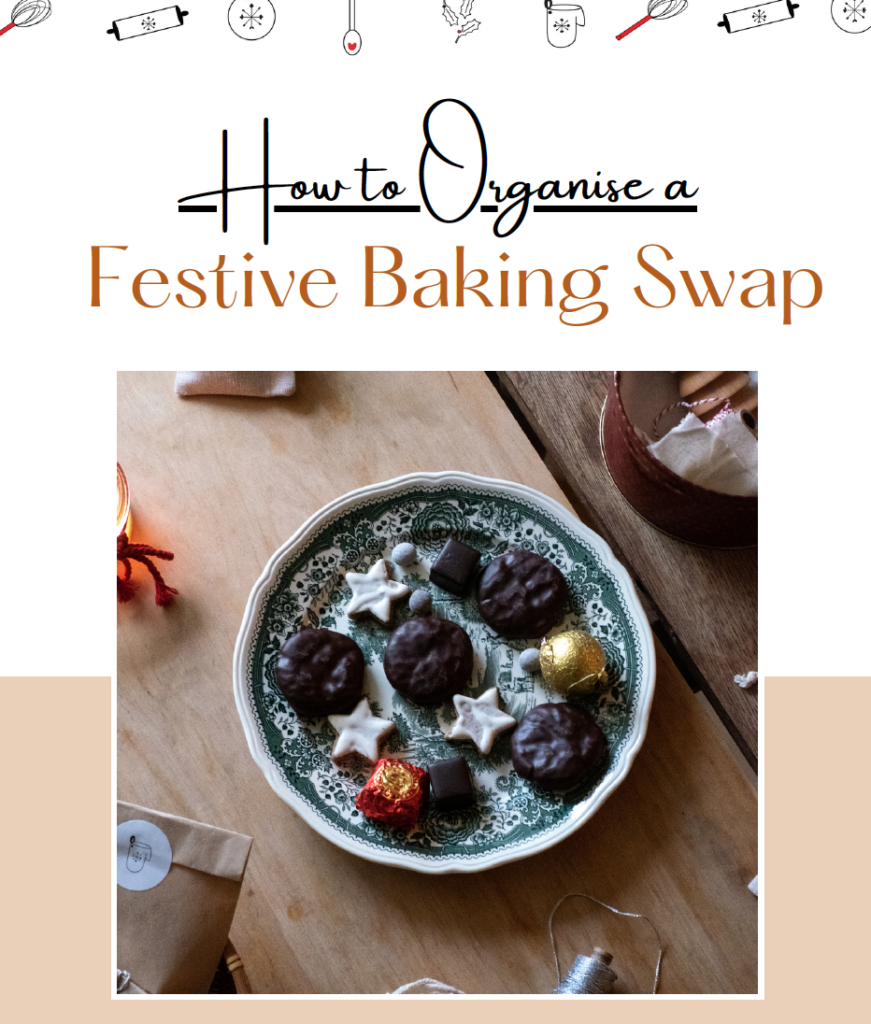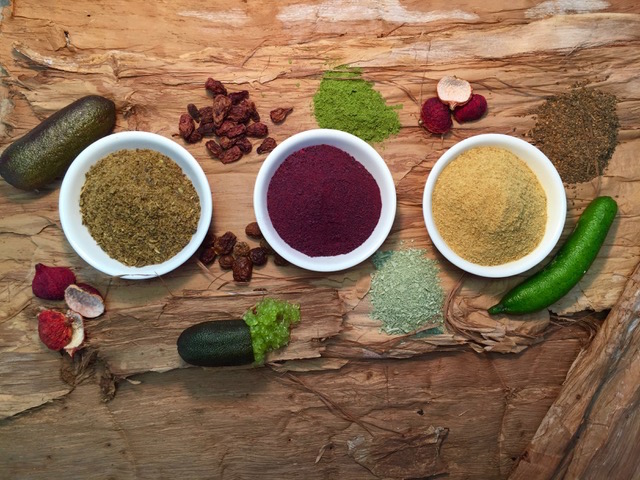 NATIF Superfoods – Kakadu Plum, Davidson Plum and Desert Lime, Quandongs, Bush Tomatoes, Fingerlimes, Lillypillis, Saltbush, Lemon Myrtle and Wattleseed
NATIF Superfoods – Kakadu Plum, Davidson Plum and Desert Lime, Quandongs, Bush Tomatoes, Fingerlimes, Lillypillis, Saltbush, Lemon Myrtle and Wattleseed
Foodie Profile: NATIF Native Foods
We chat to NATIF founder, Julie Merlet about how and why she started her business, the health benefits of native foods, and how you can grow them on your own balcony.
1. Julie, when did you start NATIF and what sparked your initial interest in native foods?
I started NATIF almost 2 years ago. My initial interest was when I studied Naturopathy and then went to live on a herb farm where I grew some native foods. Whilst travelling around the outback of Australia I was always fascinated with how the indigenous people survived in this harsh land and what they ate. I noticed health issues surrounding these communities and I always wanted to go back and do something to help. I read books and educated myself about native foods and indigenous culture.
After studying Nutritional Medicine and Human Nutrition everything came together for me and the connection was obvious. These foods have nutritional benefits that far out-weigh some overseas varieties and all I wanted to do was to get started to promote them and raise awareness that we should eat and identify with the food of our land, just like other countries have done.
2. How has the business changed since you started and how have consumer perceptions of native foods evolved since then?
Native foods are not new. They have been around in the shops and market stalls for over 30 years or more. We have just been so caught up in foods from other nationalities that we took it for granted or didn’t notice them. Now that we want something new and there is a trend surrounding them, people are all over them because they are different. But I think they are here to stay now and it is still a niche market. There is a boom and demand is outweighing supply, so that’s a good sign.
Cafes and restaurants are using them more and people are using them in their homes because they are more available online and in stores. I think people know that the ones available on the market are safe to use and the health benefits cannot be ignored. People are always wanting new flavours and aromas for new products and people are intrigued by them.
My business has evolved through trial and error and a passion for native foods and getting it out there. It was difficult navigating the industry without much help but it’s easier now and I am always learning about new native foods and people within this industry.
We have worked hard on educating the public through farmer’s markets, retail stores and social media.
3. Your business is extremely ethical. Could tell us about your products, practices and the communities and causes you support?
NATIF has a variety of 16 different native fruits, herbs and spices and it’s going to grow. NATIF is conscious of the fact that native foods were part of the indigenous culture for 65,000 years or more. Indigenous people have a close relationship with this food for medicine and health, but it’s more than that, it’s how they connect holistically with their environment and purpose in life.
NATIF took the right steps in the very beginning to ask permission from some indigenous elders about how they felt about me doing NATIF. I also read through some research documents put together by the Australian Government and Outback community elders about how we are to go forth in our conduct with using native foods in business with a set of guidelines. I thought this was important and respectful to honour that.
I source Kakadu plum that is harvested all across the top end of Australia from Eastern Northern Territory to Broome and beyond by many different communities. Wattleseed can be from a variety of different places, harvested by many different communities across Australia. NATIF sources native foods from indigenous and non-indigenous growers and harvesters.
I think people focus a lot on just the communities but there are Indigenous businesses all over Australia, even in our cities. Indigenous people are everywhere and NATIF helps out Indigenous people even in the cities.
NATIF donates to Children’s Ground, and attends some events and supports the work of the Kindred Spirits Foundation and others that are empowering communities to do things their way for themselves. We are working on an event which will include some indigenous hospitality students from remote communities coming to Melbourne for some work experience.
I help small indigenous business’ who want to use native foods by selling to them at cost price or I give it to them on consignment. It’s my way of giving back. I help with collaborations too. I also like to supply and support businesses or organisations that work with indigenous programmes that support communities in remote areas.
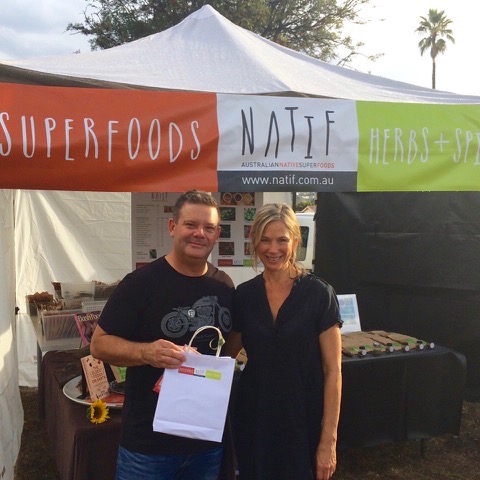 NATIF founder Julie Merlet with Gary Mehigan
NATIF founder Julie Merlet with Gary Mehigan
4. Could you tell us a bit about the ethics of native food collection and the rights of the indigenous people that collect it?
We pay a higher price for our Kakadu plum so that indigenous landowners and harvesters are paid a proper price for their cultural knowledge, the fruit and their labour, ensure that the required permits and licences are obtained and that each harvesting centre has Hazard Analysis and Critical Control Points (HACCP) certification.
I have contacts with some indigenous businesses around Australia and when you purchase from them you ask about the communities and I think they are a bit sick of it because they say well I am indigenous and you are purchasing from me, why are we always focused and putting pressure on focusing on the communities. By purchasing from indigenous native food businesses that purchase from indigenous communities you are supporting both parties. They have everything in place and look after each other. They don’t then have to deal with people like me wanting to go in and take pictures and all that. It’s about them being empowered and respecting to do it their way, we should do that for indigenous and non-indigenous people anyway.
It’s important to make sure it’s sustainably wild harvested. Indigenous people take care about which plants they harvest from, they know which trees to pick from and what not to take for regeneration. After all they have been doing this for thousands of years! They are protective of their environment. In all fairness, I have to say that most people in the industry are respectful of all these things.
5. There are thousands of native ingredient varieties. Where are the majority of them grown and which are the most popular or commonly used?
There are so many but we only use around 20-30. They are grown all over Australia mainly around their natural habitat. For example, the Davidson plum grows mostly in northern NSW and QLD. Mountain pepper and pepper berry in the more wet forests of SE Australia. Wattleseed is all around Australia like Broken Hill, Riverland SA, Western Victoria, Alice Springs, Port Augusta, etc.
River mint and riberry grow on the east coast mainly, while salt bush grows in vast areas of dry inland Australia. These are just a few examples of where native foods grow in this great big land of ours! I think it’s wonderful that we haven’t manipulated these foods yet! The Fingerlime has been crossed and so has the Davidson plum of the ones I know about.
The industry is moving into commercial crops to protect the environment going forth. They are working with indigenous experts that know how to farm these foods. We always think of indigenous people as hunter and gathers but they were also sophisticated farmers. This industry can’t go forward without working together with them. This is also the reason why we have to stop, look and listen to them. We should have done that over 200 years ago, then we could have had an amazing native foods industry by now.
Native foods can bring people together and provide opportunities. I feel proud that NATIF is a part of this growing industry and I help out wherever I can. I have rounded up food for research, provided marketing information and I talk to farmers about growing native foods on their property and lead them in the right direction.
There are some great people in this industry with lots of experience and knowledge and then there are the ‘trailblazers’ who have set up a native foods industry. I respect and support them all. Indirectly everyone who uses native foods is supporting the native food industry.
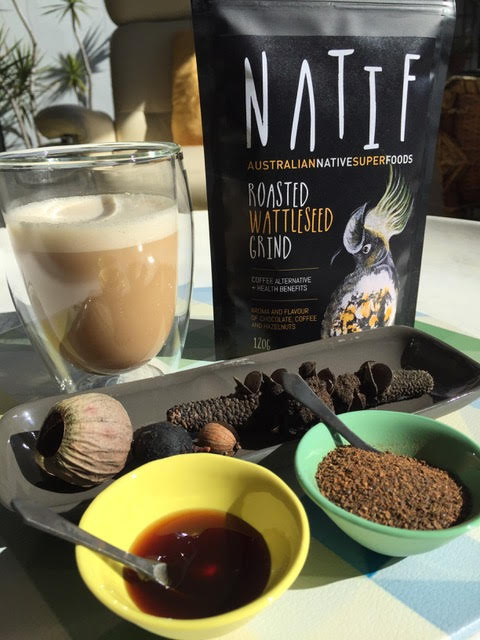 NATIF’s roasted wattleseed grind perfect for a wattle latte’
NATIF’s roasted wattleseed grind perfect for a wattle latte’
6. Which native foods are staples in your kitchen and how do you use them?
Wattleseed is my favourite staple because you can use it in so many ways. I love it because it’s a 100% sustainable product. You can make a latte’ and then re-use the wattleseed later in baking, ice-cream, pancakes, desserts, or in with breakfast oats, it adds a coffee, chocolate and hazelnut-like taste. It’s highly nutritious being high in fibre, protein and a low GI carbohydrate with other nutrients for good health.
I use Kakadu plum at least four times per week for its high vitamin C and quality antioxidants – it’s great for the immune system and general good health. I get a lot of energy when I take it as vitamin C is used in the body for energy metabolism. It’s great in smoothies, on toast with smashed avocado, into breakfast dishes and sorbets, and as long as you don’t cook with it, it will retain all its nutrients.
7. For readers wanting to learn more about where to find native foods and how to cook with them, could you recommend any cookbooks or resources?
If you want to purchase native foods you can head to the NATIF website. Your local up-market grocer probably supplies them too in some form.
I think it’s a great idea to grow some yourself in your garden or on your balcony. I currently grow about 10 native foods in my own garden, which is in pots and limited space as I have a townhouse. But this is good, I suppose because not everyone has a house with a large garden anymore. You can grown them on your veranda too, just like any other herb and spice really. They are really easy to grow and a great way of connecting with nature and to learn more about them.
The NATIF website has lots of recipes on the blog and I am releasing a cook look-book soon to inspire people so they can see that you can put these herbs and spices and dried fruits with anything, just like any other food. If you go to SBS online and type in ‘native foods‘ you can get some great recipes there.
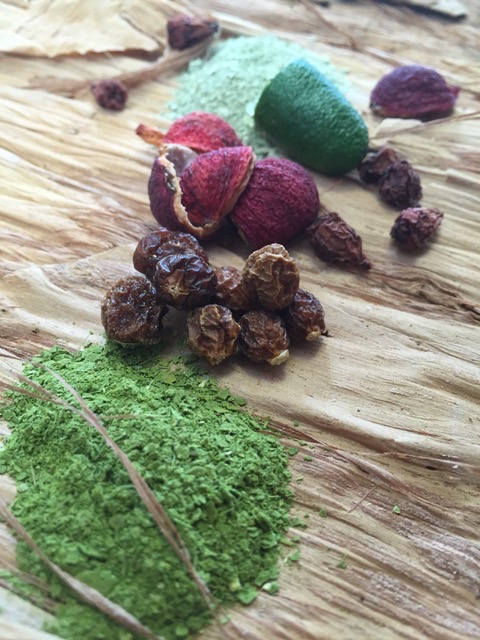 More native ingredients
More native ingredients
8. Some of the benefits of native foods are quite impressive. Could you share some of these with us?
Research has shown that these foods contain superior antioxidants compared to the blueberry, which is famous for its health benefits. Kakadu plum, quandong, Tasmania pepper leaf, lemon myrtle and anise myrtle showed up high in antioxidants. They found Vitamin E, was high in herbs like aniseed myrtle, lemon myrtle and Tasmania pepper leaf and it was also found in the Kakadu plum, quandong and desert lime.
Anise myrtle, lemon myrtle, Tasmania pepper leaf, Kakadu plum, desert lime and Davidson’s plum have high levels of lutein which is good for eye health and contained more than avocado, which is a good source of lutein. Australian desert lime contains folate or B9, 10 times greater than blueberry. Tasmanian pepper berry leaf, quandong, Kakadu plum, riberry and lemon aspen also contained folate, almost 3 times higher than blueberry.
Vitamin C levels were outstanding in Kakadu plum and in the Australian desert lime. All of the foods tested contain zinc, calcium and magnesium. Lemon myrtle was very rich in calcium and anise myrtle was rich in magnesium. Quandong was rich in magnesium and zinc and Australian desert lime rich in calcium.
Bush tomato, Tasmania pepper leaf and wattleseed contained rich sources of iron, and quandong and lemon aspen showed rich sources of iron. Selenium, which is poorly found in foods because many soils are deficient, was found in Bush tomato and wattleseed.
A high potassium-sodium ratio in Davidson plum, Australian desert lime and Kakadu plum was found. A high potassium-sodium ratio is important to prevent hypertension. As part of a healthy balanced diet adding NATIF foods to your meals can add nutrients essential for good health.
Reference, Research into the ‘Health Benefits of Australian Native Foods, RIRDC’, Australian Government.
 Julie during a trip in the Northern Territory
Julie during a trip in the Northern Territory
9. You have travelled extensively in indigenous areas around Australia. For readers wanting to connect more with the natural landscape of the north, learn more about native foods and connect with indigenous communities, do you have any recommendations or suggestions?
First of all, I want to say to be careful about foraging for food and trying them if you don’t know anything about them. Some foods can make you sick if you don’t know how to cook them or know what they are. It is illegal to take native foods from National Parks. We need to protect biodiversity and their pristine environments.
For travelling I would highly recommend Katherine to Kununurra with a stop at Gregory National Park then onto Broome via the Gipp River Road. From Kununurra you need to travel an extra 600km south so you can visit the Bungle Bungles National Park, which is amazing. Going up and down that road is really beautiful too so it’s worth the extra mileage back and forth.
The Gipp River Road is like nothing else. It’s downright red and dusty, but that’s what I love about it. Its bumpy roads that lead you to the most incredible gorges that you walk to and when you get there, it always opens up like an oasis and surprises you with its beauty, wilderness surrounds and just captivates you.
My other favorite place is the Pilbara. If you travel in towards Newton off the coast and into the desert it will surprise you with its colours and serenity. It’s here that I just connect with the surrounds without any interference. It gets into your blood and I still feel it now, always wanting to go back. The place there to go to is Karinjini National Park and don’t forget to do the ‘spider walk’!!
I have to mention another place and that is Lawn Hill National Park in western Queensland down from the Gulf of Carpentaria. That is a true oasis with rich indigenous history. I have met up with many people (indigenous and non-indigenous) on my journeys. It’s great to talk to indigenous people about the cities and they talk to you about the outback. We could talk for hours!! Don’t enter into communities without permission or permits.
In every National Park, there is lots of information to read. I take pictures and look for native foods, then try and research them later or speak to indigenous people about them. You must go into the indigenous information centers and learn from them. Look at their art, listen to their stories and song lines, ask about their food, open up your imagination and let it in. Let them tell it.
10. What is next for NATIF and do you have any exciting products or projects to share?
NATIF has a tea which will be launching very soon. I am also looking into drying muntries and desert limes whole and selling them online. NATIF has a tour in Melbourne where we visit the First People’s exhibition, then a show and tell about native foods, followed by a lunch at a native foods restaurant called Charcoal Lane, which has an in-house Indigenous hospitality programme. We want to support this once the tours get going. You can book it through Private Tours Victoria, which I also work for taking tourists around Victoria. It gets me into nature and beautiful environments and I can show off our country to visitors from all over the world.
(Images supplied by NATIF)
Website: http://www.natif.com.au
Facebook: Natif
Instagram: @natif.com.au
Notes: To book a native food tour with Julie in Melbourne, visit Private Tours Victoria.



